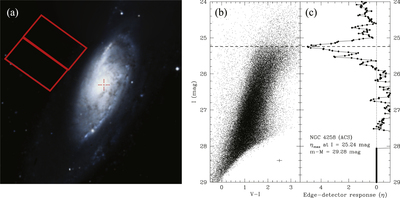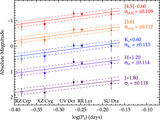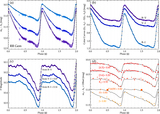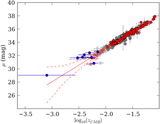Image Details

Caption: Figure 5.
Example TRGB detection in NGC 4258. (a) The location of the HST+ACS pointing of Mager et al. (2008) (blue outline) relative to the disk of NGC 4258 (from DSS) used to determine the TRGB distance to NGC 4258, emphasizing its placement securely in the halo of NGC 4258. (b) The ﹩{\text{}}{HST}+{ACS}\,V﹩,I CMD in the halo of NGC 4258 reveals a high-contrast TRGB detectable in a galaxy with μ > 29.0 mag. (c) The corresponding response of an edge-detection filter, effectively the first derivative of the I luminosity function, applied to the CMD shows a large peak consistent with the visual impression of the TRGB (dotted line). The I magnitude has been adjusted for metallicity effects. Reproduced from Mager et al. (2008).
Copyright and Terms & Conditions
© 2016. The American Astronomical Society. All rights reserved.










